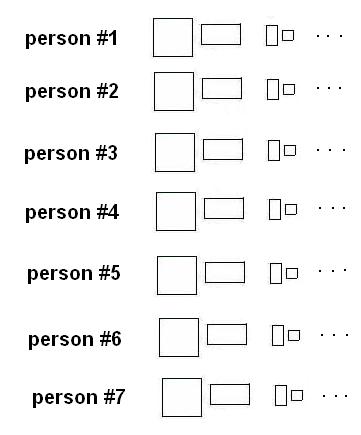
Cookie-sharing/ Chapter 2












We can write each share as an infinite bimal: 0.110110' In a decimal
the places are 1/10, 1/100, 1/1000,...whereas in a bimal the places instead are
1/2, 1/4, 1/8, ...
Fantastic job, Brad!!
Try some cookie-sharing as Brad did, or cut into 3 equal pieces instead of 2, or 10 equal pieces; see what happens!
See "share any way you like" on the MAP, for other interesting cookie-sharing that kids and adults have done .
See Sample
problems from ch.2
See also Answers to
cookie-sharing sample problems in Ch. 2
Video 3/n (coming!)
Tim, a 50 yo M.D. was studying calculus with Don via IM, for his work. He was using Don's Worksheet book, and said, 'I was working my way through the cookie problem (Ch.2) and while using the scissors that can only cut into two pieces the binary system suddenly clicked and made sense to me for the first time. I could find the binary equivalent of 1/5 and other fractions'.
Kaitlin found 3
ways to write how she shared 3 cookies between 5 people
Sara, and Maya, 7 yo twins, find Patterns in division like 10/1, 10/2, 10/3, 'using cookie-sharing
Eva shares 5 cookies between 3 people!
A computer program to get bimals from the #
cookies and # people, is in the answer section in ch.
2